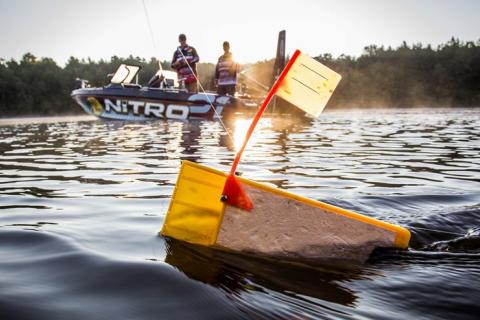
If you are looking to embark on a walleye “trophy hunt” this fall, you might want to consider a fishing trip to Lake Erie. Beginning in October, the fall trolling bite starts to turn on. As it gets closer to ice-up, the bite heats up even more.
 It's a time for bruiser sized walleyes. We usually schedule TV and video shoots on “Big Water” in the fall just to capture on video, the thrill of landing lots of big walleyes from the cold waters of The Great Lakes.
It's a time for bruiser sized walleyes. We usually schedule TV and video shoots on “Big Water” in the fall just to capture on video, the thrill of landing lots of big walleyes from the cold waters of The Great Lakes.
There are two paticular patterns that develop this time of year, a daytime bite on crankbaits and a night time bite on crankbaits. There are no guarantees for success, but for some great walleye catches this could be your best opportunity before next season.
The Day-Time Bite
At this time of year you will find the fish roaming the basin 4-5 miles off shore. If the air temperature is still warm and the water temperature is above 50 degrees, the walleyes will most likely be suspended. Once the water temperature falls below 50 degrees, the fish tend to relate to bottom.
The Night-Time Bite
The pattern takes a different turn when the sun goes down on these late season walleye. The walleyse will move from the basin to feed along the transition break usually around the 20 foot mark and about a mile off the shore. The best lure for these conditions is a larger shallow running stickbait. Run the baits in the 6 to 8 foot range. Fish are suspended and spooky, planer boards are essential.

The Trolling Technique
While you may be accustomed to long trolling passes on Lake Erie in the summer, the passes you will make in the fall are ¼ to ½ mile long. It is important to be able to cover water to find the fish. I like to use Off Shore Tackle’s OR-12 Side Planers to get the baits out to the side of the boat. Since these boards are balanced perfectly, they can be trolled at a wide range of speeds.
The proper speed is critical for this bite, typically 1 to 1.75mph. I like to use big-lipped, big profile cranks, such as the Berkley Flicker Minnow. This versatile bait can be trolled fast in warm water, which gives the lure more of a “kick” in the action. In the early spring and fall, when the water is colder, it can be trolled slow, giving it more of a “roll” in the action, which entices the fish to bite.
Editor’s Note: If you have questions or comments on this or other articles of mine you may have read, contact me through the website The NextBite.
Keith Kavajecz
- 8534 views

